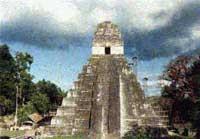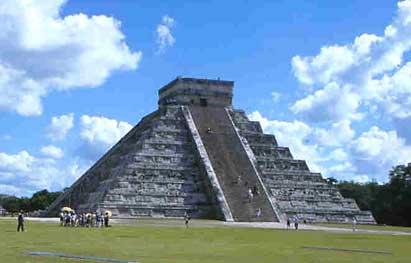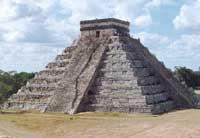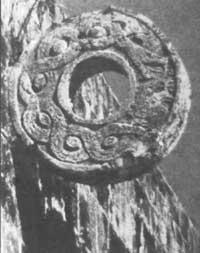The sun eliminates its worshippers
2001/05/21 Galarraga Aiestaran, Ana - Elhuyar Zientzia
According to the article, the accumulated mud in the heart of a lake has been analyzed, and the data collected indicate that the greatest drought of thousands of years occurred at the same time as the Mayan decline began.
Solar activity meets cycles of 206-208 years. This model is stored in the C-14 of the tree rings, since the brightness and sunspots influence the amount of C-14.

The new data have been collected thanks to the heart of Lake Chichancanab, in Mexico. The plaster layers piled under the lake report the climate surrounding the lake: in times of drought, evaporation causes the concentration of salts and the precipitation of the plaster. The paleoclimatologists of the University of Florida compared the accumulation of plaster with other data of the solar activity of the time and observed that the pattern of change of two centuries was fulfilled.
The plaster data of the end of Mayan civilization show the degree of drought. The greatest drought occurred between the years 750-850 and was the most terrible of the 7,000 years. On the other hand, the decline of Mayan civilization occurred between the years 750-950.
However, some experts in Mayan culture do not quite agree. For example, according to an archaeologist at the University of Arizona, although the weather was related to the disappearance of the Mayans, it was not the only agent.

Gai honi buruzko eduki gehiago
Elhuyarrek garatutako teknologia






